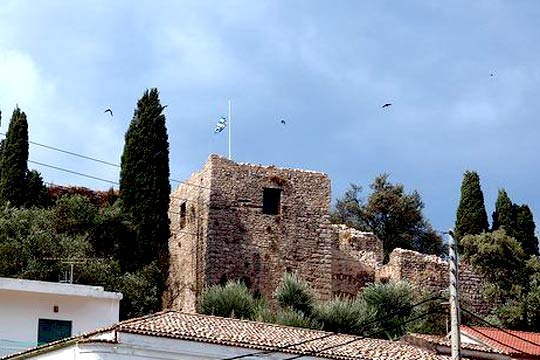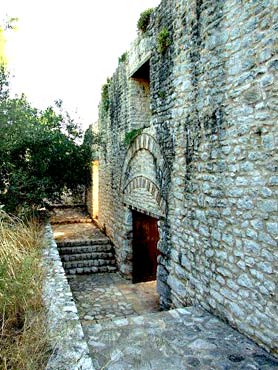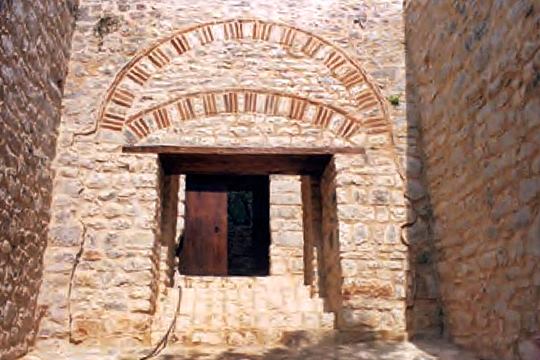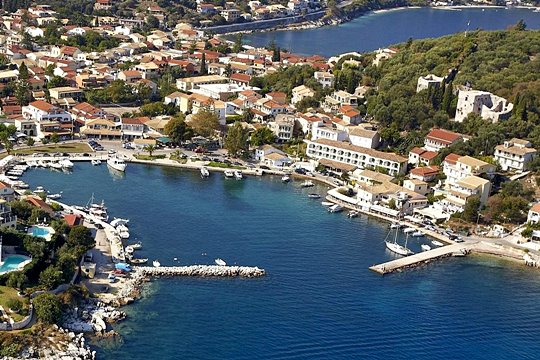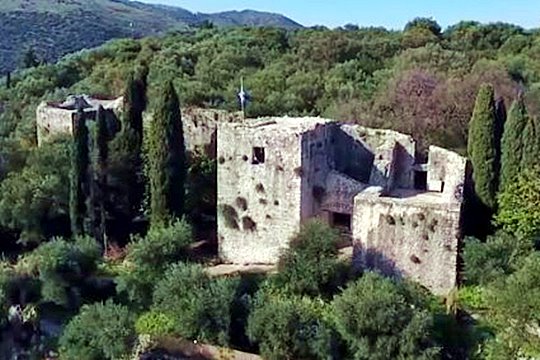Kassiopi, Voria Kerkyra, Kerkyra,Ionian islands
Fortress of Kassiopi
| Location: |
| Kassiopi, northern Corfu island |
| Region > Prefecture: |  |
| Ionian islands Kerkyra | |
| Municipality > Town: | |
| City of Voria Kerkyra • Kassiopi | |
| Altitude: | |
| Elevation ≈ 10 m |
| Time of Construction | Origin | |
| end of 6th century | BYZANTINE |
|
| Castle Type | Condition | |
| Coastal Fortress |
Not Good
|
Kassiopi Castle (Greek: Κάστρο Κασσιώπης) is a castle on the northeastern coast of Corfu overseeing the fishing village of Kassiopi. It was one of three Byzantine-period castles that defended the island before the Venetian era (1386–1797). The castles formed a defensive triangle, with Gardiki guarding the island's south, Kassiopi the northeast and Angelokastro the northwest.
Its position at the northeastern coast of Corfu overseeing the Corfu Channel that separates the island from the mainland gave the castle a strategic significance. The castle, however, never played a major role in the history of Corfu, and it was abandoned rather early.
History
The exact origins of the castle are not clear, with various theories being advanced, but they appear to be Byzantine. The castle was probably built in the 6th century, during the reign of Emperor Mauricius.
In 1081 Count Bohemund of Taranto conquered the castle at the start of the first Norman invasion of Greece.
Later, in 1084 the fortress fell into the hands of Alexios I Komnenos after he defeated the Norman fleet following three naval battles in the Corfu Channel. In 1267 the Angevins took over the castle and in 1386 the castle fell to the Venetians after some initial resistance
The Venetians ordered the destruction of the castle because its defenders resisted their takeover of Corfu in 1386 and did not willingly surrender.
After the 1669 Venetian surrender of Crete to the Ottomans, Corfu became the last Venetian possession in the Levante. Consequently, the Venetians redoubled their efforts at strengthening the defences of the island.
Following the second great siege of Corfu in 1716, the Venetians finally decided to rebuild the castle, although the local population had already moved to other places including villages on the highlands of Mount Pantokrator
Structure, Fortification & Buildings
The perimeter of the castle has a length of 1.073 km and is of a quadrilateral shape with 19 strong towers of alternating circular and rectangular cross sections guarding the walls and runs in the southwest to northeast direction. The interior of the castle has an area of 35,177 m2 and is empty of any structures although filled with olive trees. The central tower of the castle has disappeared but the main gate exists and is supported by two strong towers on either side.
Each of the gate towers has two floors and the gate features protective wall extensions which restrict access from the sides, a feature which is designed to prevent surprise ambush from an enemy hiding at the side of the gate. The thickness of the wall at the gate is 1.9 m. There are ruins of a forewall in front of the gate which could have functioned as an installation of a large iron structure which would have secured the gate.
Since the walls of the castle are vertical, and not inclined so that cannon projectiles could bounce off them, the design was meant to repulse conventional siege machinery developed prior to the advent of artillery. Such conventional equipment would have included ladders, siege towers, and battering rams. The overall design of the castle is modest and characteristic of its provincial origin and secondary role. The rectangular towers are older than the cylindrical ones and there are indications that the technology of the cylindrical towers may have been belatedly introduced to the fortress, given its rural and provincial location.
| First entry in Kastrologos: | December 2012 |
|
|
| Access |
|---|
| Approach to the monument: |
| The castle is inside the town which is at the northern part of the island. |
| Entrance: |
| ? |
| Other castles around |
|---|
| Tower of Garoufa |
| Fort of Gouvia |
| New Fortress of Corfu |
| Old Fortress of Corfu |




